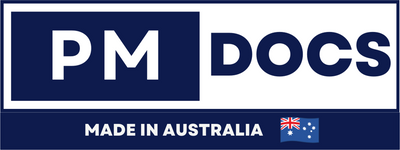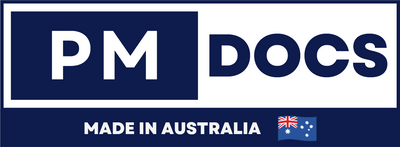How To Map NIST CSF 2.0 To ISO 27001 For Australian Organisations?
Introduction
In the ever-evolving landscape of cybersecurity, organizations often find themselves navigating through a myriad of standards and frameworks to ensure robust protection against cyber threats. Two of the most recognized frameworks in this realm are the National Institute of Standards and Technology's Cybersecurity Framework (NIST CSF) and the International Organization for Standardization's ISO 27001. This article explores the mapping of NIST CSF 2.0 to ISO 27001, specifically in the context of Australian businesses, providing a straightforward guide to understanding and implementing these standards.

Understanding NIST CSF 2.0 And ISO 27001
Before delving into their mapping, it's crucial to comprehend the essence of these frameworks.
What Is NIST CSF 2.0?
The NIST Cybersecurity Framework (CSF) is a voluntary framework consisting of standards, guidelines, and best practices to manage cybersecurity-related risk. NIST CSF 2.0, the latest version, builds upon its predecessor by introducing new components that enhance its applicability and usability. It is designed to be flexible, allowing organizations to tailor its use to their unique needs.
What Is ISO 27001?
ISO 27001 is an international standard that provides a systematic approach to managing sensitive company information, ensuring it remains secure. The standard includes requirements for establishing, implementing, maintaining, and continually improving an information security management system (ISMS). ISO 27001 is widely recognized for its comprehensive approach to information security.
The Importance Of Mapping NIST CSF To ISO 27001
Mapping NIST CSF to ISO 27001 can streamline compliance efforts, reduce redundancy, and enhance an organization's overall security posture.
Benefits of Integration
-
Unified Compliance Efforts: By aligning these frameworks, organizations can meet multiple compliance requirements simultaneously, which is particularly beneficial in regions with stringent data protection regulations, such as Australia.
-
Enhanced Security Posture: Both frameworks emphasize risk management, and their integration can provide a more comprehensive approach to identifying and mitigating risks.
-
Resource Optimization: Mapping can help identify overlapping areas, allowing for more efficient allocation of resources.
Mapping The Core Components
Now, let's delve into the core components of NIST CSF and ISO 27001 and how they align with one another.
1. Identify (NIST CSF) and Context of the Organization (ISO 27001)
The "Identify" function in NIST CSF focuses on understanding the organization's business environment, risk management strategy, and critical assets. Similarly, ISO 27001 requires organizations to consider their context, including external and internal issues that affect their ability to achieve the intended outcomes of their ISMS.
2. Protect (NIST CSF) and Annex A Controls (ISO 27001)
The "Protect" function in NIST CSF covers access control, data security, and protective technology. ISO 27001's Annex A provides a comprehensive set of controls that align with these protective measures, such as access control policies and cryptographic controls.
3. Detect (NIST CSF) and Monitoring and Review (ISO 27001)
The "Detect" function in NIST CSF emphasizes timely discovery of cybersecurity events. ISO 27001 supports this through its requirements for monitoring, measurement, analysis, and evaluation, ensuring that security events are identified and responded to promptly.
4. Respond (NIST CSF) and Incident Management (ISO 27001)
The "Respond" function in NIST CSF outlines the activities required to contain and mitigate incidents. ISO 27001 has a dedicated clause for managing information security incidents, ensuring that organizations can effectively respond to and recover from incidents.
5. Recover (NIST CSF) and Business Continuity (ISO 27001)
The "Recover" function in NIST CSF involves planning for resilience and restoring capabilities or services impaired during a cybersecurity event. ISO 27001 includes business continuity planning to ensure that critical business functions can continue during and after a security incident.
Implementing The Mapping In Australia
Australian organizations must consider local regulations, such as the Privacy Act 1988 and the Notifiable Data Breaches scheme, when implementing NIST CSF and ISO 27001.
1. Local Compliance Considerations
-
Privacy Act 1988: This act requires organizations to protect personal information and manage it transparently. The integration of NIST CSF and ISO 27001 can help organizations comply with these requirements.
-
Notifiable Data Breaches Scheme: Under this scheme, organizations must notify affected individuals and the Office of the Australian Information Commissioner (OAIC) about data breaches. A robust ISMS, complemented by NIST CSF, can ensure timely detection and response to breaches.
Practical Steps For Implementation
-
Conduct a Gap Analysis: Identify areas where current practices align or diverge from NIST CSF and ISO 27001 requirements.
-
Develop a Roadmap: Create a detailed plan to address gaps and enhance alignment between the frameworks.
-
Engage Stakeholders: Involve key stakeholders from IT, legal, and compliance departments to ensure comprehensive implementation.
-
Continuous Improvement: Regularly review and update practices to adapt to evolving cybersecurity threats and regulatory changes.
Conclusion
Mapping NIST CSF 2.0 to ISO 27001 offers Australian organizations a strategic advantage in strengthening their cybersecurity framework. By integrating these two powerful frameworks, businesses can achieve better compliance, reduce risks, and enhance their overall security posture. As cyber threats continue to evolve, leveraging the strengths of NIST CSF and ISO 27001 will remain a critical component of any successful cybersecurity strategy. By taking a systematic approach to mapping and implementing these standards, organizations can not only meet regulatory requirements but also foster a culture of continuous improvement and resilience in their cybersecurity practices.





